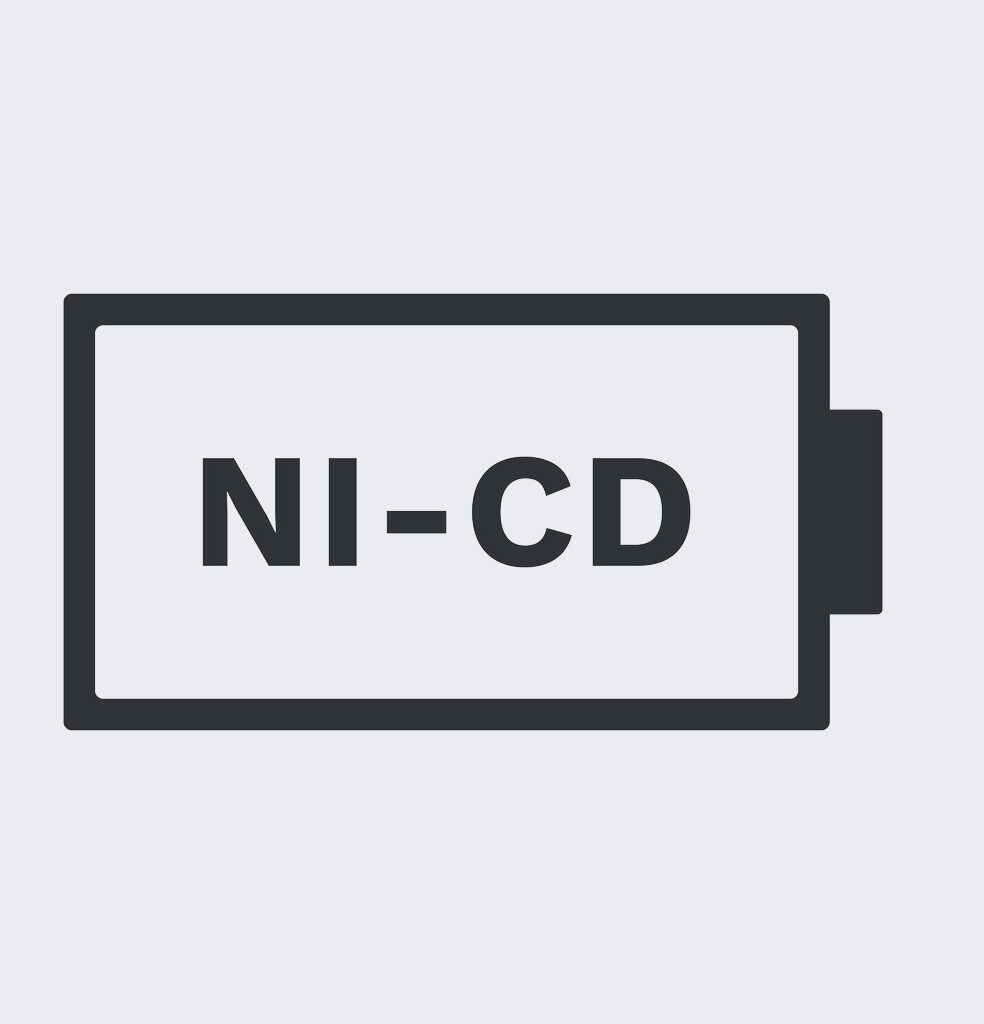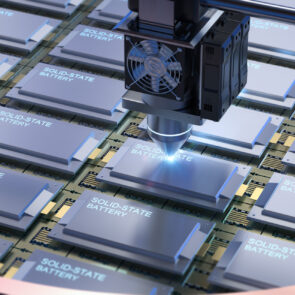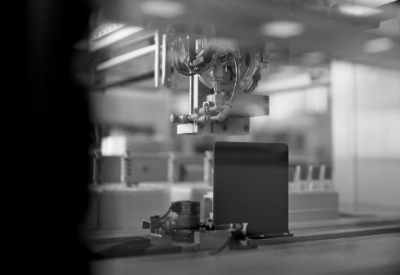Although not as widely used as other conventional batteries—like lead-acid batteries or lithium-ion batteries—nickel-cadmium (NiCd) batteries are a common choice for certain electronic applications that require rechargeable batteries. These batteries consist of nickel oxide hydroxide, metallic cadmium electrodes, and an alkaline (potassium hydroxide) electrolyte solution. Their versatility has made them popular in devices like power tools, portable electronics, and emergency backup systems.
Advantages of Nickel-Cadmium Batteries
NiCd batteries offer several distinct advantages that have contributed to their widespread use.
High Energy Density
NiCd batteries boast a high energy density, so they can store significant amounts of energy within their compact size. This characteristic makes them particularly useful for applications with limited space or where weight is a concern.
Long Cycle Life
One standout feature of NiCd batteries is their ability to endure a large number of charge-discharge cycles. This longevity makes them ideal for devices that require sustained power over extended periods, reducing the need for frequent replacements.
Wide Operating Temperature Range
NiCd batteries exhibit resilience in extreme temperatures, functioning reliably even in environments with severe cold or heat. This attribute enhances their versatility, allowing them to be employed in diverse conditions without compromising performance.
Fast Charging Capability
Another advantage of NiCd batteries is their ability to be rapidly charged. This rapid charging feature reduces downtime significantly, enhancing productivity in scenarios where quick replenishment of power is crucial.
Reliable Performance
Throughout their lifespan, NiCd batteries deliver consistent and reliable performance, boasting a stable voltage output throughout the majority of their discharge cycle. This voltage reliability makes them a preferred choice for critical applications where uninterrupted power is essential.
Disadvantages of Nickel-Cadmium Batteries
Despite their advantages, NiCd batteries also come with certain drawbacks.
Memory Effect
One notable downside of NiCd batteries is the memory effect, meaning they may develop a reduced capacity if not fully discharged before recharging. This phenomenon can result in a decrease in overall performance over time if not managed properly.
While proper charging practices can mitigate the memory effect to some extent, it remains a concern for uses that require maximum battery performance.
Environmental Concerns
Although the alkaline electrolyte solution used in NiCd batteries is less problematic for the environment than acidic solutions incorporated in other conventional batteries, there are other significant concerns, especially when it comes to the environment. Cadmium, a toxic heavy metal used in the composition of NiCd batteries’ metallic electrodes, poses serious environmental and health risks, necessitating proper disposal and recycling procedures to mitigate its harm.
As environmental awareness grows, the use of cadmium in batteries has become increasingly scrutinized, leading to efforts to develop more environmentally friendly alternatives.
Low Energy Density
In comparison to newer battery technologies like lithium-ion, NiCd batteries have a lower energy density. This limitation translates to shorter operating times and reduced efficiency in certain applications where energy efficiency is paramount.
While NiCd batteries remain competitive in terms of reliability and durability, their lower energy density can be a limiting factor in applications where maximizing runtime is essential, leading manufacturers to instead opt for batteries with higher energy densities, like lithium-ion or nickel-metal hydride (NiMH) batteries.
Self-Discharge Rate
Unlike other popular conventional power sources, such as lithium-ion batteries, NiCd batteries exhibit a notable self-discharge rate, meaning they lose charge gradually over time, even when not in use. This characteristic can lead to diminished performance if the batteries are left idle for extended periods without recharging.
While periodic maintenance charging can help mitigate self-discharge, it remains a consideration for users who require long-term storage of batteries without degradation.
Weight and Bulk
Another drawback of NiCd batteries is their relatively high weight and bulkiness compared to some alternative battery types. This aspect can pose challenges in applications where space and weight restrictions are critical factors.
While battery technology advancements have led to the development of lighter and more compact alternatives, NiCd batteries remain a popular choice in applications where their other advantages outweigh concerns about size and weight.
NanoTritium™ Batteries: A Promising Alternative to Nickel-Cadmium Batteries for Low Power Applications
Nickel-cadmium batteries offer a range of advantages, including high energy density, long cycle life, wide operating temperature range, fast charging capability, and reliable performance. However, they also present drawbacks, including the memory effect, environmental concerns related to cadmium, lower energy density compared to newer technologies, self-discharge rate, and bulkiness. The suitability of NiCd batteries depends on specific requirements and considerations, so users must weigh their benefits against their limitations.
For low-power applications requiring extended lifespan, reliability, and resilience in extreme conditions, City Labs’ NanoTritium™ batteries offer a promising solution. Our batteries incorporate nuclear battery technology to provide uninterrupted power for over 20 years, even in harsh conditions that may subject these batteries to extreme temperatures, intense vibrations, or radiation exposure. NanoTritium™ batteries are a perfect energy source for low-power microelectronic applications when you need unparalleled longevity, durability, and performance that you can trust.
City Labs partners with global leaders across industries to power next-generation technology for NASA, the U.S. military, and more—and we’re always looking for new applications for our batteries. If you are interested in finding out more about how NanoTritium™ batteries can meet your technological needs, send us a message today.
NanoTritium™ batteries are poised to revolutionize the battery technology landscape, offering a sustainable and reliable power source for a wide range of applications.










